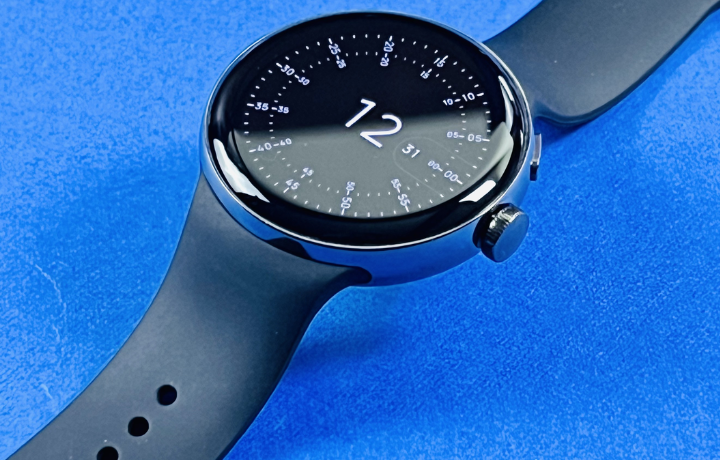Report: Google Pixel Watch Set to Launch Later This Year Alongside Pixel 8
Fitbit smartwatches follow a two-year update cycle, whereas Samsung and Apple wearables receive annual refreshes. According to information obtained by 9to5Google, the upcoming release of the Google Pixel Watch 2 is expected later this year, coinciding with the launch of the Pixel 8 and 8 Pro smartphones.
An insider source reveals that the Pixel Watch 2, although its final name might differ, will align with the naming convention used for Google phones. The current plan is to announce and release the Pixel Watch 2 alongside the Pixel 8 and 8 Pro, following Google’s historical practice of unveiling flagship phones in October.
While some may consider this a rapid turnaround, it’s important to note that the original Pixel Watch had been in development for several years. Therefore, by the time a next-generation model is announced, it won’t be merely a one-year-old product. To illustrate, at one point during its development, it featured only 1GB of RAM and significantly less storage capacity.
At I/O 2022, Google provided a sneak peek of the Pixel Watch after an incident where a prototype was accidentally left at a restaurant in April and subsequently extensively photographed. The official presentation in May showcased a significantly improved design compared to the leaked images.
Since its release, the Pixel Watch has garnered positive feedback from users, demonstrating commendable performance and a battery that typically lasts a full day, although not exceeding that duration. Nevertheless, it is evident that Google has recognized areas for improvement and has made notable upgrades in response to user feedback and market demands.
- EU Warns Apple of Penalties Over Throttling of Third-Party USB-C Cables on iPhone 15 Release
- Samsung Galaxy Z Flip5 Protective Case Leak Confirms “Folder Screen” Design
What areas could the Pixel Watch 2 focus on for improvement?
The Pixel Watch 2 has the opportunity to improve in several areas. One notable aspect is the processor. The current Pixel Watch utilizes the Samsung Exynos 9110 chip, which is the same chip found in the 2018 Galaxy Watch.
In comparison, the Galaxy Watch 4/5 features the more advanced 5nm Exynos W920 chip with Cortex-A55 cores. The upcoming wave of Wear OS devices is expected to adopt the Snapdragon W5+ Gen 1 chip, which is built on a 4nm process.
This new chip should offer various efficiency gains, potentially leading to improved battery life. While it remains uncertain if Google aims to achieve more than a full day of usage, the introduction of a new chip should at least result in longer usage for heavy users.
On the software side, the Pixel Watch 2 is expected to incorporate Material You, a design language that brings personalized and dynamic color schemes. It is anticipated that Wear OS will adopt Material You, providing users with a more visually appealing and customizable interface.
Additionally, it is likely that the Pixel Watch 2 will be based on Android 13, which will serve as the underlying software foundation. These software enhancements should contribute to an overall improved user experience on the Pixel Watch 2.
In terms of fitness features, the first Pixel Watch emphasized per-second heart rate tracking. However, some anticipated features such as overnight skin temperature and oxygen saturation (SpO2) statistics in the Health Metrics dashboard have yet to be enabled, even after six months.
To enhance its fitness capabilities, Google could consider adding additional sensors. The Fitbit Sense 2 stands out as the most advanced among Google’s wearables, featuring a built-in skin temperature sensor rather than relying on existing sensors and algorithms.
It also includes a continuous Electrodermal Sensor (cEDA) for stress tracking. Incorporating similar advanced sensors in the Pixel Watch 2 could further enhance its fitness tracking capabilities.
Regarding design, it is unlikely that Google will deviate from the dome-shaped design at this point. However, there is room for improvement in terms of thinner bezels, which would provide a more modern and visually appealing look.
Additionally, it is expected that the band connector will remain the same to allow first-generation Pixel Watch owners to reuse their existing watch straps, ensuring compatibility and ease of transition between devices.
- See Also:
- Samsung Galaxy Z Flip5 Leak: Larger and Higher-Resolution External Screen
- New iPhone 15 to be Buttonless, 2-Button Volume Design Remains with Rumored Action Button
source: 9to5google.com






